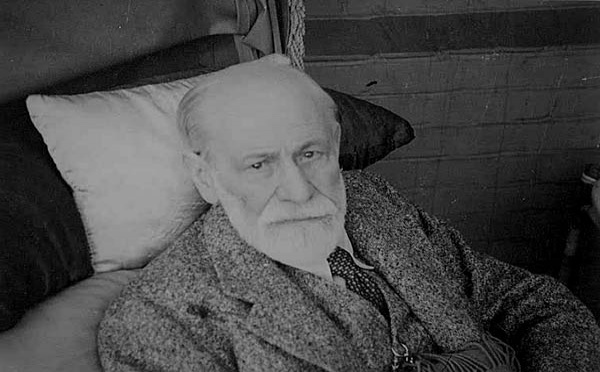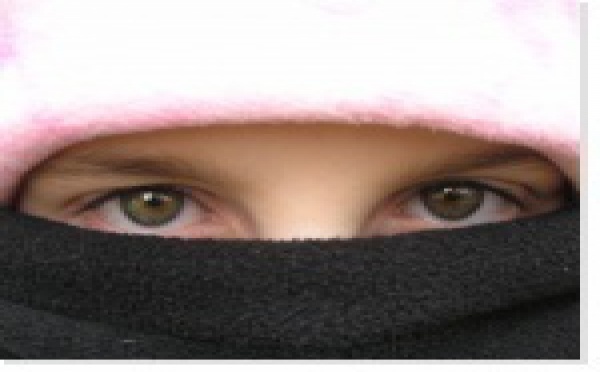BATEMAN A.W., FONAGY P., Health service utilisation costs for borderline personality disorder patients trated with psychoanalytically oriented partial hospitalisation versus general psychoatric care
Am. J. Psychiatry Vol. : , N° : 160, 2003, pages 169 - 171
LEICHSENRING F, LEIBING E, The effectiveness of psychodynamic therapy and cognitive behavior therapy in the treatment of personality disorders : a meta-analysis
Am. J. Psychiatry Vol. : 160, N° : 7, 2003, pages 1223 - 1232
BLAY S.L., VEL FUCKS J.S., BARRUZI M., DI PIETRO M.C., GASTAL F.L., NETO A.M., de SOUZA M.P., GLAUSIUSZ L.R. DEWEY M., Effectiveness of time-limited psychotherapy for minor psychiatric disorders: Randomised controlled trial evaluating immediate v. long-term effects
Background Psychotherapy research rarely has studied outcome in the longer term. Aims To evaluate the effectiveness of brief group dynamic psychotherapy (BGDP) intervention in patients with minor psychiatric disorders compared with the usual clinical management shortly after treatment termination and to investigate whether intervention would show a differential effect at 2-year follow-up. Method Patients were allocated randomly to an experimental or control group. The General Health Questionnaire (GHQ) was used as a primary outcome measure. Results Based on improvement in the GHQ, at termination of treatment the BGDP group showed a significant improvement in 23 out of 42 (54.8%) compared with 11 out of 41 (26.8%) in the clinical management group. The difference in the total improvement rate is 28% (95% C18-48) (chi(2)=6.7; d.f.=1; P=0.009). In contrast, no differential follow-up effects were found between the BGDP and clinical management groups. Conclusions Psychotherapy appears to have beneficial effects at termination of treatment but the changes attained were not stable.
Br. J. Psychiatry. Vol. : 180, N° : 5, 2002, pages 416 - 422
BORKOVEC T.D., NEWMAN M.G., PINCUS A.L. LYTLE R., A component analysis of cognitive-behavioral therapy for generalized anxiety disorder and the role of interpersonal problems
Clients with generalized anxiety disorder (GAD) received either (a) applied relaxation and self-control desensitization, (b) cognitive therapy, or (c) a combination of these methods. Treatment resulted in significant improvement in anxiety and depression that was maintained for 2 years. The large majority no longer met diagnostic criteria; a minority sought further treatment during follow-up. No differences in outcome were found between conditions; review of the GAD therapy literature suggested that this may have been due to strong effects generated by each component condition. Finally, interpersonal difficulties remaining at posttherapy, measured by the Inventory of Interpersonal Problems Circumplex Scales (L. E. Alden, J. S. Wiggins, & A. L. Pincus, 1990) in a subset of clients, were negatively associated with posttherapy and follow-up improvement, suggesting the possible utility of adding interpersonal treatment to cognitive-behavioral therapy to increase therapeutic effectiveness.
J. Consult. Clin. Psychol. Vol. : 70, N° : 2, 2002, pages 288 - 298
BURNAND Y., ANDREOLI A., KOLATTE E., VENTURINI A. ROSSET N., Psychodynamic psychotherapy and clomipramine in the treatment of major depression
OBJECTIVE: The authors compared a combination of clomipramine and psychodynamic psychotherapy with clomipramine alone in a randomized controlled trial among patients with major depression. METHODS: Seventy-four patients between the ages of 20 and 65 years who were assigned to ten weeks of acute outpatient treatment for major depression were studied. Bipolar disorder, psychotic symptoms, severe substance dependence, organic disorder, past intolerance to clomipramine, and mental retardation were exclusion criteria. RESULTS: Marked improvement was noted in both treatment groups. Combined treatment was associated with less treatment failure and better work adjustment at ten weeks and with better global functioning and lower hospitalization rates at discharge. A cost savings of $2,311 per patient in the combined treatment group, associated with lower rates of hospitalization and fewer lost work days, exceeded the expenditures related to providing psychotherapy. CONCLUSIONS: Provision of supplemental psychodynamic psychotherapy to patients with major depression who are receiving antidepressant medication is cost-effective.
Psychiatr. Serv. Vol. : 53, N° : 5, 2002, pages 585 - 590
CORMAC I., JONES C. CAMPBELL C., Cognitive behaviour therapy for schizophrenia (Cochrane Review)
BACKGROUND: Medication is the mainstay of treatment for schizophrenia. Many people with schizophrenia, however, continue to experience symptoms in spite of medication and may experience side effects that are unwanted and unpleasant. In addition to medication additional forms of treatment include talking therapies such as cognitive behavioural therapy. This approach helps to link the person's feelings and patterns of thinking which underpin distress. OBJECTIVES: To review the effectiveness of cognitive behavioural therapy for people with schizophrenia, when compared to standard care, specific medication, other therapies and non-intervention. SEARCH STRATEGY: Electronic searches of Biological Abstracts (1980-1998), CINAHL (1982-1998), The Cochrane Library (Issue 2, 1998), The Cochrane Schizophrenia Groups' Register of Trials, which encompasses up to date searches of all listed databases (January 2001), EMBASE (1980-1998), MEDLINE (1966-1998), PsychLIT (1887-1997), SIGLE (1990-1998), Sociofile (1980-1998) were undertaken. All references of the articles selected were searched for further relevant trials. SELECTION CRITERIA: This review includes relevant randomised trials of cognitive behaviour therapy for people with a diagnosis of schizophrenia-like illnesses. Outcomes such as death, mental state, relapse, psychological well-being and acceptability of treatment were sought. DATA COLLECTION AND ANALYSIS: Studies were reliably selected and assessed for methodological quality. Data were extracted by two reviewers working independently. Dichotomous data were analysed on an intention-to-treat basis and continuous data with 65% completion rate are presented. Where possible, for dichotomous outcomes, a relative risk (RR) with the 95% confidence interval (CI) was estimated allong with the number needed to treat statistic (NNT). MAIN RESULTS: Twenty-two relevant papers describing thirteen trials were identified. Cognitive behavioural therapy in addition to standard care did not significantly reduce the rate of relapse and readmission to hospital when compared with standard care alone (medium term 1 RCT, N=61, RR 0.1 CI 0.01 to 1.7; long term 2 RCTs, N=123, RR 1.1 CI 0.8 to 1.5). A significant difference was observed, however, favouring cognitive behavioural therapy over standard care alone, in terms of being able to be discharged from hospital (1 RCT, N=62, RR 0.5 CI 0.3 to 0.9, NNT 3 CI 2 to 12). For 'no important improvement in mental state' data showed a significant difference favouring the cognitive behavioural therapy group over standard care alone when measured at 13 to 26 weeks (2 RCTs, N=123, RR 0.7 CI 0.6 to 0.9, NNT 4 CI 2 to 8). After one year the difference was no longer significant (3 RCTs, N=211, RR 0.95 CI 0.6 to 1.5). On continuous measures (BPRS, CPRS, Psychiatric Assessment Scale) data are not convincing of an effect. A cognitive behavioural therapy approach focusing on compliance may have some effects on insight and attitudes to medication, but the clinical meaning of these data is unclear. When compared with supportive psychotherapy, cognitive behavioural therapy had no effects on relapse rate and clinically meaningful improvements in mental state. Cognitive behavioural therapy combined with other psycho-social/educational interventions may decrease the numbers of people able to tolerate the intervention, at least under study conditions. REVIEWER'S CONCLUSIONS: Cognitive behavioural therapy is a promising but under evaluated intervention. Currently, trial-based data supporting the wide use of cognitive behavioural therapy for people with schizophrenia or other psychotic illnesses are far from conclusive. More trials are justified, especially in comparison with a lower grade supportive approach. These trials should be designed to be both clinically meaningful and widely applicable.
Cochrane. Database. Syst. Rev. Vol. : , N° : 1, 2002, pages CD0005 -
COTTRAUX J., Les thérapies comportementales et cognitives sont elles efficaces ?
Rev. Prat. Vol. : SSpress, N° : , 2002, pages -
COTTRAUX J., Non-pharmacological treatments for anxiety disorders
Dialog. Clin. Neurosci. Vol. : SSpress, N° : , 2002, pages -
DEPARTEMENT OF H.E.A.L.T.H., Treatment choice in psychological therapies and counselling : evidence based clinical practice guideline
Vol. : , N° : , 2002, pages -
GARRATT A., SCHMIDT L., MACKINTOSH A. FITZPATRICK R., Quality of life measurement: docsgraphic study of patient assessed health outcome measures
OBJECTIVES: To assess the growth of quality of life measures and to examine the availability of measures across specialties. DESIGN: Systematic searches of electronic databases to identify developmental and evaluative work relating to health outcome measures assessed by patients. MAIN OUTCOME MEASURES: Types of measures: disease or population specific, dimension specific, generic, individualised, and utility. Specialties in which measures have been developed and evaluated. RESULTS: 3921 reports that described the development and evaluation of patient assessed measures met the inclusion criteria. Of those that were classifiable, 1819 (46%) were disease or population specific, 865 (22%) were generic, 690 (18%) were dimension specific, 409 (10%) were utility, and 62 (1%) were individualised measures. During 1990-9 the number of new reports of development and evaluation rose from 144 to 650 per year. Reports of disease specific measures rose exponentially. Over 30% of evaluations were in cancer, rheumatology and musculoskeletal disorders, and older people's health. The generic measures--SF-36, sickness impact profile, and Nottingham health profile--accounted for 612 (16%) reports. CONCLUSIONS: In some specialties there are numerous measures of quality of life and little standardisation. Primary research through the concurrent evaluation of measures and secondary research through structured reviews of measures are prerequisites for standardisation. Recommendations for the selection of patient assessed measures of health outcome are needed.
Bmj Vol. : 324, N° : 7351, 2002, pages 1417 -
GRANHOLM E., MCQUAID J.R., MCCLURE F.S., PEDRELLI P. JESTE D.V., A randomized controlled pilot study of cognitive behavioral social skills training for older patients with schizophrenia
Schizophr. Res. Vol. : 53, N° : 1-2, 2002, pages 167 - 169
GREIST J.H., MARKS I.M., BAER L., KOBAK K.A., WENZEL K.W., HIRSCH M.J., MANTLE J.M. CLARY C.M., Behavior therapy for obsessive-compulsive disorder guided by a computer or by a clinician compared with relaxation as a control
BACKGROUND: The demand for effective behavior therapy for obsessive-compulsive disorder (OCD) by exposure and ritual prevention exceeds its supply by trained therapists. A computer-guided behavior therapy self-help system (BT STEPS) was created that patients access by telephone from home via interactive voice response technology. This study compared the value of computer-guided behavior therapy value with that of clinician-guided behavior therapy and systematic relaxation as a control treatment. METHOD: After screening by a clinician, 218 patients with DSM-IV OCD at 8 North American sites were randomly assigned to 10 weeks of behavior therapy treatment guided by (1) a computer accessed by telephone and a user workbook (N = 74) or (2) a behavior therapist (N = 69) or (3) systematic relaxation guided by an audiotape and manual (N = 75). RESULTS: By week 10, in an intent-to-treat analysis, mean change in score on the Yale-Brown Obsessive Compulsive Scale was significantly greater in clinician-guided behavior therapy (8.0) than in computer-guided (5.6), and changes in scores with both clinician-guided and computer-guided behavior therapy were significantly greater than with relaxation (1.7), which was ineffective. Similarly, the percentage of responders on the Clinical Global Impressions scale was significantly (p
Am. J. Psychiatry Vol. : , N° : 160, 2003, pages 169 - 171
LEICHSENRING F, LEIBING E, The effectiveness of psychodynamic therapy and cognitive behavior therapy in the treatment of personality disorders : a meta-analysis
Am. J. Psychiatry Vol. : 160, N° : 7, 2003, pages 1223 - 1232
BLAY S.L., VEL FUCKS J.S., BARRUZI M., DI PIETRO M.C., GASTAL F.L., NETO A.M., de SOUZA M.P., GLAUSIUSZ L.R. DEWEY M., Effectiveness of time-limited psychotherapy for minor psychiatric disorders: Randomised controlled trial evaluating immediate v. long-term effects
Background Psychotherapy research rarely has studied outcome in the longer term. Aims To evaluate the effectiveness of brief group dynamic psychotherapy (BGDP) intervention in patients with minor psychiatric disorders compared with the usual clinical management shortly after treatment termination and to investigate whether intervention would show a differential effect at 2-year follow-up. Method Patients were allocated randomly to an experimental or control group. The General Health Questionnaire (GHQ) was used as a primary outcome measure. Results Based on improvement in the GHQ, at termination of treatment the BGDP group showed a significant improvement in 23 out of 42 (54.8%) compared with 11 out of 41 (26.8%) in the clinical management group. The difference in the total improvement rate is 28% (95% C18-48) (chi(2)=6.7; d.f.=1; P=0.009). In contrast, no differential follow-up effects were found between the BGDP and clinical management groups. Conclusions Psychotherapy appears to have beneficial effects at termination of treatment but the changes attained were not stable.
Br. J. Psychiatry. Vol. : 180, N° : 5, 2002, pages 416 - 422
BORKOVEC T.D., NEWMAN M.G., PINCUS A.L. LYTLE R., A component analysis of cognitive-behavioral therapy for generalized anxiety disorder and the role of interpersonal problems
Clients with generalized anxiety disorder (GAD) received either (a) applied relaxation and self-control desensitization, (b) cognitive therapy, or (c) a combination of these methods. Treatment resulted in significant improvement in anxiety and depression that was maintained for 2 years. The large majority no longer met diagnostic criteria; a minority sought further treatment during follow-up. No differences in outcome were found between conditions; review of the GAD therapy literature suggested that this may have been due to strong effects generated by each component condition. Finally, interpersonal difficulties remaining at posttherapy, measured by the Inventory of Interpersonal Problems Circumplex Scales (L. E. Alden, J. S. Wiggins, & A. L. Pincus, 1990) in a subset of clients, were negatively associated with posttherapy and follow-up improvement, suggesting the possible utility of adding interpersonal treatment to cognitive-behavioral therapy to increase therapeutic effectiveness.
J. Consult. Clin. Psychol. Vol. : 70, N° : 2, 2002, pages 288 - 298
BURNAND Y., ANDREOLI A., KOLATTE E., VENTURINI A. ROSSET N., Psychodynamic psychotherapy and clomipramine in the treatment of major depression
OBJECTIVE: The authors compared a combination of clomipramine and psychodynamic psychotherapy with clomipramine alone in a randomized controlled trial among patients with major depression. METHODS: Seventy-four patients between the ages of 20 and 65 years who were assigned to ten weeks of acute outpatient treatment for major depression were studied. Bipolar disorder, psychotic symptoms, severe substance dependence, organic disorder, past intolerance to clomipramine, and mental retardation were exclusion criteria. RESULTS: Marked improvement was noted in both treatment groups. Combined treatment was associated with less treatment failure and better work adjustment at ten weeks and with better global functioning and lower hospitalization rates at discharge. A cost savings of $2,311 per patient in the combined treatment group, associated with lower rates of hospitalization and fewer lost work days, exceeded the expenditures related to providing psychotherapy. CONCLUSIONS: Provision of supplemental psychodynamic psychotherapy to patients with major depression who are receiving antidepressant medication is cost-effective.
Psychiatr. Serv. Vol. : 53, N° : 5, 2002, pages 585 - 590
CORMAC I., JONES C. CAMPBELL C., Cognitive behaviour therapy for schizophrenia (Cochrane Review)
BACKGROUND: Medication is the mainstay of treatment for schizophrenia. Many people with schizophrenia, however, continue to experience symptoms in spite of medication and may experience side effects that are unwanted and unpleasant. In addition to medication additional forms of treatment include talking therapies such as cognitive behavioural therapy. This approach helps to link the person's feelings and patterns of thinking which underpin distress. OBJECTIVES: To review the effectiveness of cognitive behavioural therapy for people with schizophrenia, when compared to standard care, specific medication, other therapies and non-intervention. SEARCH STRATEGY: Electronic searches of Biological Abstracts (1980-1998), CINAHL (1982-1998), The Cochrane Library (Issue 2, 1998), The Cochrane Schizophrenia Groups' Register of Trials, which encompasses up to date searches of all listed databases (January 2001), EMBASE (1980-1998), MEDLINE (1966-1998), PsychLIT (1887-1997), SIGLE (1990-1998), Sociofile (1980-1998) were undertaken. All references of the articles selected were searched for further relevant trials. SELECTION CRITERIA: This review includes relevant randomised trials of cognitive behaviour therapy for people with a diagnosis of schizophrenia-like illnesses. Outcomes such as death, mental state, relapse, psychological well-being and acceptability of treatment were sought. DATA COLLECTION AND ANALYSIS: Studies were reliably selected and assessed for methodological quality. Data were extracted by two reviewers working independently. Dichotomous data were analysed on an intention-to-treat basis and continuous data with 65% completion rate are presented. Where possible, for dichotomous outcomes, a relative risk (RR) with the 95% confidence interval (CI) was estimated allong with the number needed to treat statistic (NNT). MAIN RESULTS: Twenty-two relevant papers describing thirteen trials were identified. Cognitive behavioural therapy in addition to standard care did not significantly reduce the rate of relapse and readmission to hospital when compared with standard care alone (medium term 1 RCT, N=61, RR 0.1 CI 0.01 to 1.7; long term 2 RCTs, N=123, RR 1.1 CI 0.8 to 1.5). A significant difference was observed, however, favouring cognitive behavioural therapy over standard care alone, in terms of being able to be discharged from hospital (1 RCT, N=62, RR 0.5 CI 0.3 to 0.9, NNT 3 CI 2 to 12). For 'no important improvement in mental state' data showed a significant difference favouring the cognitive behavioural therapy group over standard care alone when measured at 13 to 26 weeks (2 RCTs, N=123, RR 0.7 CI 0.6 to 0.9, NNT 4 CI 2 to 8). After one year the difference was no longer significant (3 RCTs, N=211, RR 0.95 CI 0.6 to 1.5). On continuous measures (BPRS, CPRS, Psychiatric Assessment Scale) data are not convincing of an effect. A cognitive behavioural therapy approach focusing on compliance may have some effects on insight and attitudes to medication, but the clinical meaning of these data is unclear. When compared with supportive psychotherapy, cognitive behavioural therapy had no effects on relapse rate and clinically meaningful improvements in mental state. Cognitive behavioural therapy combined with other psycho-social/educational interventions may decrease the numbers of people able to tolerate the intervention, at least under study conditions. REVIEWER'S CONCLUSIONS: Cognitive behavioural therapy is a promising but under evaluated intervention. Currently, trial-based data supporting the wide use of cognitive behavioural therapy for people with schizophrenia or other psychotic illnesses are far from conclusive. More trials are justified, especially in comparison with a lower grade supportive approach. These trials should be designed to be both clinically meaningful and widely applicable.
Cochrane. Database. Syst. Rev. Vol. : , N° : 1, 2002, pages CD0005 -
COTTRAUX J., Les thérapies comportementales et cognitives sont elles efficaces ?
Rev. Prat. Vol. : SSpress, N° : , 2002, pages -
COTTRAUX J., Non-pharmacological treatments for anxiety disorders
Dialog. Clin. Neurosci. Vol. : SSpress, N° : , 2002, pages -
DEPARTEMENT OF H.E.A.L.T.H., Treatment choice in psychological therapies and counselling : evidence based clinical practice guideline
Vol. : , N° : , 2002, pages -
GARRATT A., SCHMIDT L., MACKINTOSH A. FITZPATRICK R., Quality of life measurement: docsgraphic study of patient assessed health outcome measures
OBJECTIVES: To assess the growth of quality of life measures and to examine the availability of measures across specialties. DESIGN: Systematic searches of electronic databases to identify developmental and evaluative work relating to health outcome measures assessed by patients. MAIN OUTCOME MEASURES: Types of measures: disease or population specific, dimension specific, generic, individualised, and utility. Specialties in which measures have been developed and evaluated. RESULTS: 3921 reports that described the development and evaluation of patient assessed measures met the inclusion criteria. Of those that were classifiable, 1819 (46%) were disease or population specific, 865 (22%) were generic, 690 (18%) were dimension specific, 409 (10%) were utility, and 62 (1%) were individualised measures. During 1990-9 the number of new reports of development and evaluation rose from 144 to 650 per year. Reports of disease specific measures rose exponentially. Over 30% of evaluations were in cancer, rheumatology and musculoskeletal disorders, and older people's health. The generic measures--SF-36, sickness impact profile, and Nottingham health profile--accounted for 612 (16%) reports. CONCLUSIONS: In some specialties there are numerous measures of quality of life and little standardisation. Primary research through the concurrent evaluation of measures and secondary research through structured reviews of measures are prerequisites for standardisation. Recommendations for the selection of patient assessed measures of health outcome are needed.
Bmj Vol. : 324, N° : 7351, 2002, pages 1417 -
GRANHOLM E., MCQUAID J.R., MCCLURE F.S., PEDRELLI P. JESTE D.V., A randomized controlled pilot study of cognitive behavioral social skills training for older patients with schizophrenia
Schizophr. Res. Vol. : 53, N° : 1-2, 2002, pages 167 - 169
GREIST J.H., MARKS I.M., BAER L., KOBAK K.A., WENZEL K.W., HIRSCH M.J., MANTLE J.M. CLARY C.M., Behavior therapy for obsessive-compulsive disorder guided by a computer or by a clinician compared with relaxation as a control
BACKGROUND: The demand for effective behavior therapy for obsessive-compulsive disorder (OCD) by exposure and ritual prevention exceeds its supply by trained therapists. A computer-guided behavior therapy self-help system (BT STEPS) was created that patients access by telephone from home via interactive voice response technology. This study compared the value of computer-guided behavior therapy value with that of clinician-guided behavior therapy and systematic relaxation as a control treatment. METHOD: After screening by a clinician, 218 patients with DSM-IV OCD at 8 North American sites were randomly assigned to 10 weeks of behavior therapy treatment guided by (1) a computer accessed by telephone and a user workbook (N = 74) or (2) a behavior therapist (N = 69) or (3) systematic relaxation guided by an audiotape and manual (N = 75). RESULTS: By week 10, in an intent-to-treat analysis, mean change in score on the Yale-Brown Obsessive Compulsive Scale was significantly greater in clinician-guided behavior therapy (8.0) than in computer-guided (5.6), and changes in scores with both clinician-guided and computer-guided behavior therapy were significantly greater than with relaxation (1.7), which was ineffective. Similarly, the percentage of responders on the Clinical Global Impressions scale was significantly (p








































